Pakistan Movement
| Part of a series on the |
| Culture of Pakistan |
|---|
 |
| Traditions |
|
Mythology and folklore |
| Cuisine |
| Sport |
|
Monuments |
|

The Pakistan Movement or Tehrik-e-Pakistan (Bengali: পাকিস্তান আন্দোলন, Pakistan Andolon; Urdu: تحریک پاکستان – Taḥrīk-i Pākistān) was a religious political movement in the 1940s that aimed for and succeeded in the creation of Pakistan from the Muslim-majority areas of the British Indian Empire.
The leadership of the movement was educated at Aligarh Muslim University. From the Aligarh Movement, the Indian Muslim community developed a secular political identity.[1] The Pakistan Movement progressed within India alongside the Indian independence movement, but the Pakistan Movement sought to establish a new nation-state that protected the religious identity and political interests of Muslims in South Asia.[2]
Urdu poets such as Iqbal and Faiz used literature, poetry and speech as a powerful tool for political awareness.[3][4][5]
The driving force behind the Pakistan Movement was the Muslim community of the Muslim minority provinces, United Province and Bombay Presidency, rather than that of the Muslim majority provinces.[6][7][8]
History of the movement
Background

During this time, Lord Macaulay's radical and influential educational reforms led to the numerous changes to the introduction and teaching of Western languages (e.g. English and Latin), history, and philosophy.[9][10] Religious studies and the Arabic, Turkish, and Persian languages were completely barred from the state universities. In a short span of time, the English language had become not only the medium of instruction but also the official language in 1835 in place of Persian, disadvantaging those who had built their careers around the latter language.[10]

Traditional Hindu and Islamic studies were no longer supported by the British Crown, and nearly all of the madrasahs lost their waqf (lit. financial endowment).[9][10]

 British forces storming of the Pettah Gate of Bangalore.
British forces storming of the Pettah Gate of Bangalore.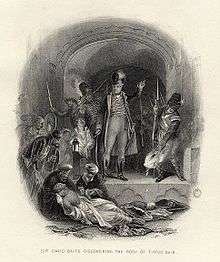 General Sir David Baird discovering the body of Tipu Sultan, 1799.
General Sir David Baird discovering the body of Tipu Sultan, 1799.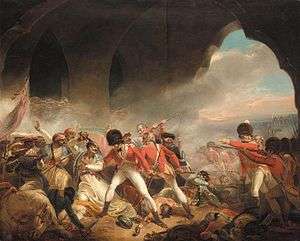
Renaissance vision
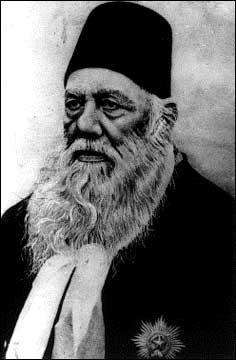
Eventually, many Muslims barred their children to be educated at English universities which had proved to be disastrous for the Muslim communities. Very few Muslim families had their children sent at the English universities. On the other hand, the effects of Bengali renaissance made the Hindus population to be more educated and gained lucrative positions at the Indian Civil Service; many ascended to the influential posts in the British government.
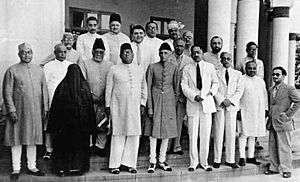
Rise of organised movement
The success of All India Muhammadan Educational Conference as a part of the Aligarh Movement, the All-India Muslim League, was established with the support provided by Syed Ahmad Khan in 1906.[13] It was founded in Dhaka in a response to reintegration of Bengal after a mass Hindu protest took place in the subcontinent. Earlier in 1905, viceroy Lord Curzon partitioned the Bengal which was favoured by the Muslims, since it gave them a Muslim majority in the eastern half.[14]
In 1909, Lord Minto promulgated the Council Act and met with a Muslim delegation led by Aga Khan III to meet with Viceroy Lord Minto,[15][16][17][18] a deal to which Minto agreed. The delegation consisted of 35 members, who each represented their respective region proportionately, mentioned hereunder.
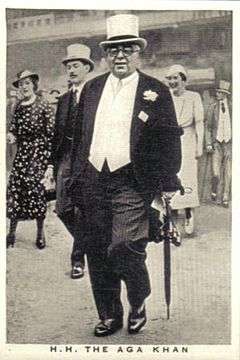
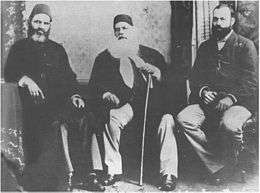
- Sir Aga Khan III. (Head of the delegation); (Bombay).
- Nawab Mohsin-ul-Mulk. (Aligarh).
- Nawab Waqar-ul-Mulk. (Muradabad).
- Maulvi Hafiz Hakim Ajmal Khan. (Delhi).
- Maulvi Syed Karamat Husain. (Allahabad).
- Maulvi Sharifuddin (Patna).
- Nawab Syed Sardar Ali Khan (Bombay).
- Syed Abdul Rauf. (Allahabad).
- Maulvi Habiburrehman Khan. (Aligarh).
- Sahibzada Aftab Ahmed Khan. (Aligarh).
- Abdul Salam Khan. (Rampur).
- Raees Muhammed Ahtasham Ali. (Lucknow)
- Khan Bahadur Muhammad Muzammilullah Khan. (Aligarh).
- Haji Muhammed Ismail Khan. (Aligarh).
- Shehzada Bakhtiar Shah. (Calcutta).
- Malik Umar Hayat Khan Tiwana. (Shahpur).
- Khan Bahadur Muhammed Shah Deen. (Lahore).
- Khan Bahadur Syed Nawab Ali Chaudhary. (Mymansingh).
- Nawab Bahadur Mirza Shuja'at Ali Baig. (Murshidabad).
- Nawab Nasir Hussain Khan Bahadur. (Patna).
- Khan Bahadur Syed Ameer Hassan Khan. (Calcutta).
- Syed Muhammed Imam. (Patna).
- Nawab Sarfaraz Hussain Khan Bahadur. (Patna).
- Maulvi Rafeeuddin Ahmed. (Bombay).
- Khan Bahadur Ahmed Muhaeeuddin. (Madras).
- Ibraheem Bhai Adamjee Pirbhai. (Bombay).
- Maulvi Abdul Raheem. (Calcutta).
- Syed Allahdad Shah. (Khairpur).
- Maulana H. M. Malik. (Nagpur).
- Khan Bahadur Col. Abdul Majeed Khan. (Patiala).
- Khan Bahadur Khawaja Yousuf Shah. (Amritsar).
- Khan Bahadur Mian Muhammad Shafi. (Lahore).
- Khan Bahadur Shaikh Ghulam Sadiq. (Amritsar).
- Syed Nabiullah. (Allahabad).
- Khalifa Syed Muhammed Khan Bahadur. (Patna).[19]
Until 1937 the Muslim League had remained an organisation of elite Indian Muslims. The Muslim League leadership then began mass mobilisation and the League then became a popular party with the Muslim masses in the 1940s, especially after the Lahore Resolution.[20][21] Under Jinnah's leadership its membership grew to over two million and became more religious and even separatist in its outlook.[22][23] The Muslim League's earliest base was the United Provinces.[24] From 1937 onwards, the Muslim League and Jinnah attracted large crowds throughout India in its processions and strikes.[25]
Pakistan Resolution
At the 1940 Muslim League conference in Lahore in 1940, Jinnah said: "Hindus and the Muslims belong to two different religions, philosophies, social customs and literature.... It is quite clear that Hindus and Muslims derive their inspiration from different sources of history. They have different epics, different heroes and different episodes.... To yoke together two such nations under a single state, one as a numerical minority and the other as a majority, must lead to growing discontent and final destruction of any fabric that may be so built up for the government of such a state."[26] At Lahore the Muslim League formally recommitted itself to creating an independent Muslim state, including Sindh, Punjab, Baluchistan, the North West Frontier Province and Bengal, that would be "wholly autonomous and sovereign". The resolution guaranteed protection for non-Muslim religions. The Lahore Resolution, moved by the sitting Chief Minister of Bengal A. K. Fazlul Huq, was adopted on 23 March 1940, and its principles formed the foundation for Pakistan's first constitution. Talks between Jinnah and Gandhi in 1944 in Bombay failed to achieve agreement. This was the last attempt to reach a single-state solution.[27]
World War II
On 3 September 1939, British Prime Minister Neville Chamberlain declared the commencement of war with Germany. Shortly thereafter, Viceroy Lord Linlithgow followed suit and announced that India too was at war with Germany.[28] In 1939, the Congress leaders resigned from all British India government positions to which they had elected.[29] The Muslim League celebrated the end of the Congress-led British Indian government, with Jinnah famously declaring it "a day of deliverance and thanksgiving".[29] In a secret memorandum to the British Prime Minister, the Muslim League agreed to support the United Kingdom's war efforts—provided that the British recognise it as the only organisation that spoke for Indian Muslims.[29]
Following the Congress's effective protest against the United Kingdom unilaterally involving India in the war without consulting with them, the Muslim League went on to support the British war efforts, which allowed them to actively propagandise against the Congress with the cry of "Islam in Danger".[30]
The Indian Congress and Muslim League responded differently over the World War II issue. The Indian Congress refused to support the British unless the whole Indian subcontinent was granted independence.[31] The Muslim League, on the other hand, supported Britain both politically and via human contributions.[31] The Muslim League leaders' British education, training, and philosophical ideas helped bring the British government and the Muslim League closer to each other.[31] Jinnah himself supported the British in World War II when the Congress failed to collaborate.[31] The British government made a pledge to the Muslims in 1940 that it would not transfer power to an Independent India unless its constitution was first approved by the Indian Muslims, a promise it did not subsequently keep.[31]
The end of the war
In 1942, Gandhi called for the Quit India Movement against the United Kingdom. On the other hand, the Muslim League advised Prime Minister Winston Churchill that Great Britain should "divide and then Quit".[31] Negotiations between Gandhi and Viceroy Wavell failed, as did talks between Jinnah and Gandhi in 1944.[31] When World War II ended, the Muslim League's push for the Pakistan Movement and Gandhi's efforts for Indian independence intensified the pressure on Prime Minister Winston Churchill.[31] Given the rise of American and Russian order in the world politics and the general unrest in India, Wavell called for general elections to be held in 1945.[31]
In the 1940s, Jinnah emerged as a leader of the Indian Muslims and was popularly known as Quaid-e-Azam (‘Great Leader’). The general elections held in 1945 for the Constituent Assembly of British Indian Empire, the Muslim League secured and won 425 out of 496 seats reserved for Muslims (and about 89.2% of Muslim votes) on a policy of creating an independent state of Pakistan, and with an implied threat of secession if this was not granted. The Congress which was led by Gandhi and Nehru remained adamantly opposed to dividing India. The partition seems to have been inevitable after all, one of the examples being Lord Mountbatten's statement on Jinnah: "There was no argument that could move him from his consuming determination to realize the impossible dream of Pakistan."[32]
Stephen P. Cohen, an American historian of Pakistan, writes in The Idea of Pakistan of the influence of South Asian Muslim nationalism on the Pakistan movement:[33]
[The ethnoloinguistic-nationalist narrative] begins with a glorious precolonial state-empire when the Muslims of South Asia were politically united and culturally, civilizationally, and strategically dominant. In that era, ethnolinguistic differences were subsumed under a common vision of an Islamic-inspired social and political order. However, the divisions among Muslims that did exist were exploited by the British, who practiced 'divide-and-rule' politics, displacing the Mughals and circumscribing other Islamic rulers. Moreover, the Hindus were the allies of the British, who used them to strike a balance with the Muslims; many Hindus, a fundamentally insecure people, hated Muslims and would have oppressed them in a one-man, one-vote democratic India. The Pakistan freedom movement united these disparate pieces of the national puzzle, and Pakistan was the expression of the national will of India's liberated Muslims.
1946 elections
The 1946 elections resulted in the Muslim League winning the majority of Muslim votes and reserved Muslim seats in the Central and provincial assemblies,[34] performing exceptionally well in Muslim minority provinces such as UP and Bihar, relative to the Muslim majority provinces of Punjab and NWFP. Thus, the 1946 election was effectively a plebiscite where the Indian Muslims were to vote on the creation of Pakistan; a plebiscite which the Muslim League won.[35][36][37] This victory was assisted by the support given to the Muslim League by the rural peasantry of Bengal as well as the support of the landowners of Sindh and Punjab. The Congress, which initially denied the Muslim League's claim of being the sole representative of Indian Muslims, was now forced to recognise that the Muslim League represented Indian Muslims.[36] The British had no alternative except to take Jinnah's views into account as he had emerged as the sole spokesperson for India's Muslims. However, the British did not desire India to be partitioned[38][39] and in one last effort to avoid it they arranged the Cabinet Mission plan.[40][41] In 1946, the Cabinet Mission Plan recommended a decentralised but united India, this was accepted by the Muslim League but rejected by the Congress, thus, leading the way for the Partition of India.[42]
Political campaigns and support
Punjab
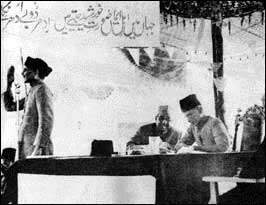

A key battleground during the elections was the Punjab province. The Punjab had a slight Muslim majority, and local politics had been dominated by the secular Unionist Party and its longtime leader Sir Sikandar Hayat Khan. The Unionists had built a formidable power base in the Punjabi countryside through policies of patronage allowing them to retain the loyalty of landlords and pirs who exerted significant local influence.[43] For the Muslim League to claim to represent the Muslim vote, they would need to win over the majority of the seats held by the Unionists. Following the death of Sir Sikander in 1942, and bidding to overcome their dismal showing in the elections of 1937, the Muslim League intensified campaigning throughout rural and urban Punjab.[44]
A major thrust of the Muslim's League's campaign was the increased use of religious symbolism. Activists were advised to join in communal prayers when visiting villages, and gain permission to hold meetings after the Friday prayers.[43] The Quran became a symbol of the Muslim League at rallies, and pledges to vote where made on it.[43] Students, a key component of the Muslim League's activists, were trained to appeal to the electorate on communal lines, and at the peak of student activity during the Christmas holidays of 1945, 250 students from Aligarh were invited to campaign in the province along with 1550 members of the Punjab Muslim Student's Federation.[43] A key achievement of their religious propaganda came in enticing Muslim Jats and Gujjars from their intercommunal tribal loyalties.[43] In response, the Unionists attempted to counter the growing religious appeal of the Muslim League by introducing religious symbolism into their own campaign, but with no student activists to rely upon and dwindling support amongst the landlords, their attempts met with little success.
To further their religious appeal, the Muslim League also launched efforts to entice Pirs towards their cause. Pirs dominated the religious landscape, and were individuals who claimed to inherit religious authority from Sufi Saints who had proselytised in the region since the eleventh century.[43] By the twentieth century, most Punjabi Muslims offered allegiance to a Pir as their religious guide, thus providing them considerable political influence.[43] The Unionists had successfully cultivated the support of Pirs to achieve success in the 1937 elections, and the Muslim League now attempted to replicate their method of doing so. To do so, the Muslim League created the Masheikh Committee, used Urs ceremonies and shrines for meetings and rallies and encouraged fatwas urging support for the Muslim League.[43] Reasons for the pirs switching allegiance varied. For the Gilani Pirs of Multan the over-riding factor was local longstanding factional rivalries, whilst for many others a shrines size and relationship with the government dictated its allegiance.[43]
Despite the Muslim League's aim to foster a united Muslim loyalty, it also recognised the need to better exploit the biradari network and appeal to primordial tribal loyalties. In 1946 it held a special Gujjar conference intending to appeal to all Muslim Gujjars, and lifted its ban on Jahanara Shahnawaz with the hope of appealing to Arain constituencies.[43] Appealing to biradari ties enabled the Muslim League to accelerate support amongst landlords, and in turn use the landlords client-patron economic relationship with their tenants to guarantee votes for the forthcoming election.[43]
A separate strategy of the Muslim League was to exploit the economic slump suffered in the Punjab as a result of the Second World War.[43] The Punjab had supplied 27 per cent of the Indian Army recruits during the war, constituting 800,000 men, and representing a significant part of the electorate. By 1946, less than 20 per cent of those servicemen returning home had found employment.[43] This in part was exacerbated by the speedy end to the war in Asia, which caught the Unionist's by surprise, and meant their plans to deploy servicemen to work in canal colonies were not yet ready.[43] The Muslim League took advantage of this weakness and followed Congress's example of providing work to servicemen within its organisation.[43] The Muslim League's ability to offer an alternative to the Unionist government, namely the promise of Pakistan as an answer to the economic dislocation suffered by Punjabi villagers, was identified as a key issue for the election.[43]
On the eve of the elections, the political landscape in the Punjab was finely poised, and the Muslim League offered a credible alternative to the Unionist Party. The transformation itself had been rapid, as most landlords and pirs had not switched allegiance until after 1944.[43] The breakdown of talks between the Punjab Premier, Malik Khizar Hayat Tiwana and Muhammad Ali Jinnah in late 1944 had meant many Muslims were now forced to choose between the two parties at the forthcoming election.[43] A further blow for the Unionists came with death of its leading statesman Sir Chhotu Ram in early 1945.
The Western Punjab was home to a small minority population of Punjabi Sikhs and Hindus up to 1947 apart from the Muslim majority.[45] In 1947, the Punjab Assembly cast its vote in favour of Pakistan with supermajority rule, which made many minority Hindus and Sikhs migrated to India while Muslim refugees from India settled in the Western Punjab and across Pakistan.[46]
Sindh
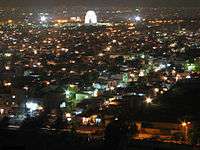
Both the Muslim landed elite, waderas, and the Hindu commercial elements, banias, collaborated in oppressing the predominantly Muslim peasantry of Sindh who were economically exploited. In Sindh’s first provincial election after its separation from Bombay in 1936, economic interests were an essential factor of politics informed by religious and cultural issues.[47] Due to British policies, much land in Sindh was transferred from Muslim to Hindu hands over the decades.[48] The exploitation of Sindhi Muslims by Sindhi Hindus had reached alarming proportions.[49] Religious tensions rose in Sindh over the Sukkur Manzilgah issue where Muslims and Hindus disputed over an abandoned mosque in proximity to an area sacred to Hindus. The Sindh Muslim League exploited the issue and agitated for the return of the mosque to Muslims. Consequentially, a thousand members of the Muslim League were imprisoned. Eventually, due to panic the government restored the mosque to Muslims.[47]
The separation of Sindh from Bombay Presidency triggered Sindhi Muslim nationalists to support the Pakistan Movement. Even while the Punjab and North-West Frontier Province were ruled by parties hostile to the Muslim League, Sindh remained loyal to Jinnah.[50] Although the prominent Sindhi Muslim nationalist G.M. Syed left the All India Muslim League in the mid-1940s and his relationship with Jinnah never improved, the overwhelming majority of Sindhi Muslims supported the creation of Pakistan, seeing in it their deliverance.[51] Sindhi support for the Pakistan Movement arose from the desire of the Sindhi Muslim business class to drive out their Hindu competitors.[52] The Muslims League’s rise to becoming the party with the strongest support in Sindh was in large part linked to its winning over of the religious pir families. Although the Muslim Leaue had previously fared poorly in the 1937 elections in Sindh, when local Sindhi Muslim parties won more seats,[53] the Muslim League’s cultivation of support from the pirs and saiyids of Sindh in 1946 helped it gain a foothold in the province.[54]
Khyber Pakhtunkhwa
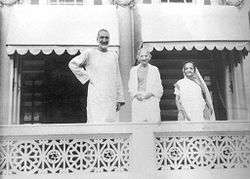
Unlike Punjab, Balochistan, and Sindh, the Muslim League had little support in Khyber–Pakhtunkhwa. Here the Congress and Pashtun nationalist leader Abdul Ghaffar Khan had considerable support for the cause of the united India.[55]
During the Independence period there was a Congress-led ministry in the province, which was led by secular Pashtun leaders, including Abdul Ghaffar Khan, who preferred joining India instead of Pakistan. The secular Pashtun leadership was also of the view that if joining India was not an option then they should espouse the cause of an independent ethnic Pashtun state rather than Pakistan.[56] The secular stance of Abdul Ghaffar Khan had driven a wedge between the ulama of the otherwise pro-Congress (and pro-Indian unity) Jamiat Ulema Hind (JUH) and Abdul Ghaffar Khan's Khudai Khidmatgars. The directives of the ulama in the province began to take on communal tones. The ulama saw the Hindus in the province as a 'threat' to Muslims. Accusations of molesting Muslim women were levelled at Hindu shopkeepers in Nowshera, a town where anti-Hindu sermons were delivered by maulvis. Tensions also rose in 1936 over the abduction of a Hindu girl in Bannu. Such controversies stirred up anti-Hindu sentiments amongst the province's Muslim population.[57] By 1947 the majority of the ulama in the province began supporting the Muslim League's idea of Pakistan.[58]
Immediately prior to Pakistani independence from Britain in 1947, the British held a referendum in the NWFP to allow voters to choose between joining Pakistan or India. The referendum was held on 2 July 1947 while polling began on 6 July 1947 and the referendum results were made public on 20 July 1947. According to the official results, there were 572,798 registered voters out of which 289,244 (99.02%) votes were cast in favor of Pakistan while only 2874 (0.98%) were cast in favor of India. According to an estimate the total turnout for the referendum was only 15% less than the total turnout in the 1946 elections.[59][60] At the same time a large number of Khudai Khidmatgar supporters boycotted the referendum and intimidation against Hindu and Sikh voters by supporters of the Pakistan Movement was also reported.[61]
Balochistan
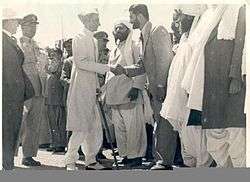
During British rule Balochistan was under the rule of a Chief Commissioner and did not have the same status as other provinces of British India . The Muslim League under Muhammad Ali Jinnah in the period 1927-1947 strived to introduce reforms in Balochistan to bring it on par with other provinces of British India.
During the Pakistan Movement, public opinion in Balochistan, at least in Quetta and other small towns, was overwhelmingly in favour of Pakistan. The pro-India Congress, which drew support from Hindus and some Muslims, sensing that geographic and demographic compulsions would not allow the province’s inclusion into the newly Independent India, began to encourage separatist elements in Balochistan, and other Muslim majority provinces such as NWFP.[62]
Balochistan contained a Chief Commissioner's province and four princely states under the British Raj. The province's Shahi Jirga and the non-official members of the Quetta Municipality opted for Pakistan unanimously on 29 June 1947.[63] Three of the princely states, Makran, Las Bela and Kharan, acceded to Pakistan in 1947 after independence.[64] But the ruler of the fourth princely state, the Khan of Kalat, Ahmad Yar Khan, who used to call Jinnah his 'father',[65] declared Kalat's independence as this was one of the options given to all of the 535 princely states by British Prime Minister Clement Attlee.[66]
Kalat finally acceded to Pakistan on March 27, 1948 after the 'strange help' of All India Radio and a period of negotiations and bureaucratic tactics used by Pakistan.[65] The signing of the Instrument of Accession by Ahmad Yar Khan, led his brother, Prince Abdul Karim, to revolt against his brother's decision[67] in July 1948.[68] Princes Agha Abdul Karim Baloch and Muhammad Rahim, refused to lay down arms, leading the Dosht-e Jhalawan in unconventional attacks on the army until 1950.[67] The Princes fought a lone battle without support from the rest of Balochistan.[69]
Bengal
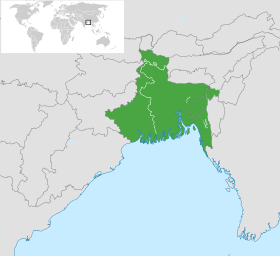
The Pakistan Movement was highly popular in the Muslim population of Bengal, which was also the birthplace of the Muslim League, in the 1940s.[70] Many of the Muslim League's notable statesman and activists hailed from East Bengal, including Huseyn Suhrawardy, Nazimuddin, and Nurul Amin, who later all became Prime ministers of Pakistan. Following the partition of Bengal, violence erupted in the region, which was mainly contained to Kolkata and Noakhali.[71] It is documented by Pakistani historians that Suhrawardy wanted Bengal to be an independent state that would neither join Pakistan or India but would remained unpartitioned. Despite the heavy criticism from the Muslim League, Jinnah realised the validity of Suhrawardy's argument and gave his tacit support to the idea of an Independent Bengal.[72][73]
Rohingya Muslims
During the Pakistan Movement in the 1940s, Rohingya Muslims in western Burma had an ambition to annexe and merge their region into East-Pakistan.[74] Before the independence of Burma in January 1948, Muslim leaders from Arakan addressed themselves to Jinnah, the founder of Pakistan, and asked his assistance in annexing of the Mayu region to Pakistan which was about to be formed.[74] Two months later, North Arakan Muslim League was founded in Akyab (modern: Sittwe, capital of Arakan State), it, too demanding annexation to Pakistan.[74] However, it is noted that the proposal was never materialised after it was reportedly turned down by Jinnah.[74]
Role of Ulama
In its election campaign in 1946 the Muslim League drew upon the support of Islamic scholars and Sufis with the rallying cry of 'Islam in danger'.[34] The majority of Barelvis supported the creation of Pakistan and Barelvi ulama issued fatwas in support of the Muslim League.[75][76][77] In contrast, most Deobandi ulama (led by Maulana Husain Ahmad Madani) opposed the creation of Pakistan and the two-nation theory. Maulana Husain Ahmad Madani and the Deobandis advocated 'composite nationalism', according to which Muslims and Hindus were one nation.[78] Madani differentiated between 'qaum' -which meant a multi-religious nation- and 'millat'-which was exclusively the social unity of Muslims.[79][80] However, a few highly influential Deobandi clerics did support the creation of Pakistan.[81] Such Deobandi ulama included Mufti Muhammad Shafi and Maulana Shabbir Ahmad Uthmani.[82] Maulana Ashraf Ali Thanvi also supported the Muslim League's demand for the creation of Pakistan[83] and he dismissed the criticism that most Muslim League members were not practising Muslims. Maulana Ashraf Ali Thanvi was of the view that the Muslim League should be supported and also be advised at the same time to become religiously observant.[84]
Conclusion
Sir Syed Ahmad Khan (1817–1898) philosophical ideas plays a direct role in the Pakistan Movement.[85] His Two-Nation Theory became more and more obvious during the Congress rule in the Subcontinent.[86] In 1946, the Muslim majorities agreed to the idea of Pakistan, as a response to Congress's one sided policies,[86][87] which were also the result of leaders like Jinnah leaving the party in favour of Muslim League,[88] winning in seven of the 11 provinces. Prior to 1938, Bengal with 33 million Muslims had only ten representatives, less than the United Provinces of Agra and Oudh, which were home to only seven million Muslims. Thus the creation of Pakistan became inevitable and the British had no choice but to create two separate nations – Pakistan and India – in 1947.[89][90][91][92]
But the main motivating and integrating factor was that the Muslims' intellectual class wanted representation; the masses needed a platform on which to unite.[85] It was the dissemination of western thought by John Locke, Milton and Thomas Paine, at the Aligarh Muslim University that initiated the emergence of Pakistan Movement.[85] According to Pakistan Studies curriculum, Muhammad bin Qasim is often referred to as 'the first Pakistani'.[93] Muhammad Ali Jinnah also acclaimed the Pakistan movement to have started when the first Muslim put a foot in the Gateway of Islam.[94]
After the independence in 1947, the violence and upheavals continued to be faced by Pakistan, as Liaquat Ali Khan becoming the Prime Minister of Pakistan in 1947.[95] The issue involving the equal status of Urdu and Bengali languages created divergence in the country's political ideology.[96] Need for good governance led to the military take over in 1958 which was followed by rapid industrialisation in the 1960s.[95] Economic grievances and unbalanced financial payments led to a bloody and an armed struggle of East Pakistan in the 1970s, in which eventually resulted with East Pakistan becoming Bangladesh in 1971.[96]
In the successive periods of tragedy of East-Pakistan, the country continued to rebuild and reconstruct itself in terms constitutionally and its path to transformed into republicanism.[97] The XIII amendment (1997) and XVIII amendment (2010) transformed the country into becoming a parliamentary republic as well as also becoming a nuclear power in the subcontinent.[98]
Non-Muslims contribution and efforts
Jinnah's vision was supported by few of the Hindus, Sikhs, Parsis, Jews and Christians that lived in Muslim-dominated regions of undivided India.[99][100] The most notable and influential Hindu figure in the Pakistan Movement was Jogendra Nath Mandal from Bengal. Jagannath Azad was from the Urdu-speaking belt.[101] Mandal represented the Hindu contingent calling for an independent Pakistan, and was one of the founding-fathers of Pakistan.[99] After the independence, Mandal was given ministries of Law, Justice, and Work-Force by Jinnah in Liaquat Ali Khan's government.[99] He returned to India and submitted his resignation to Liaquat Ali Khan, the then-Prime Minister of Pakistan.
Some local Christians also stood behind Jinnah's vision, playing a pivotal role in the movement.[102] The notable Christians included Sir Victor Turner and Alvin Robert Cornelius.[103] Turner was responsible for the economic, financial planning of the country after the independence.[103] Turner was among one of the founding fathers[103] of Pakistan, and guided Jinnah and Ali Khan on economic affairs, taxation and to handle the administrative units.[103] Alvin Robert Cornelius was elevated as Chief Justice of Lahore High Court bench by Jinnah and served as Law Secretary in Liaquat Ali Khan's government.[103] The Hindu, Christian, and Parsi communities also played their due role for the development of Pakistan soon after its creation.[102]
As an example or inspiration
The cause of Pakistan Movement became an inspiration in different countries of the world. Protection of one's beliefs, equal rights, and liberty were incorporated in the state's constitution. Arguments presented by Ali Mazrui pointed out that the South Sudan's movement led to the partition of the Sudan into Sudan proper, which is primarily Muslim, and South Sudan, which is primarily Christian and animistic.[104]
Memory and legacy
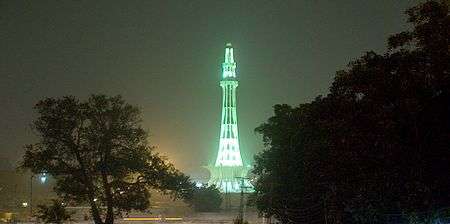
The Pakistan Movement has a central place in Pakistan's memory.[105] The founding story of Pakistan Movement is not only covered in the school and universities textbooks but also in innumerable monuments.[106] Almost all key events are covered in Pakistan's textbooks, literature, and novels as well.[106] Thus, Fourteenth of August is one of major and most celebrated national day in Pakistan.[107] To many authors and historians, Jinnah's legacy is Pakistan.[108]
The Minar-e-Pakistan is a monument which has attracted ten thousand visitors.[109] The Minar-e-Pakistan still continues to project the memory to the people to remember the birth of Pakistan.[109] Jinnah's estates in Karachi and Ziarat has attracted thousands visitors.[110]
Historian of Pakistan, Vali Nasr, argues that the Islamic universalism had become a main source of Pakistan Movement that shaped patriotism, meaning, and nation's birth.[111] To many Pakistanis, Jinnah's role is viewed as a modern Moses-like leader;[112] whilst many other founding fathers of the nation-state also occupies extremely respected place in the hearts of the people of Pakistan.[113]
Timeline
|
|
Notable quotations
I would like to see the Punjab, North-West Frontier Province, Sind and Baluchistan amalgamated into a single State. Self-government within the British Empire, or without the British Empire, the formation of a consolidated North-West Indian Muslim State appears to me to be the final destiny of the Muslims, at least of North-West India.[116]
At this solemn hour in the history of India, when British and Indian statesmen are laying the foundations of a Federal Constitution for that land, we address this appeal to you, in the name of our common heritage, on behalf of our thirty million Muslim brethren who live in Pakistan – by which we mean the five Northern units of India, Viz: Punjab, North-West Frontier Province (Afghan Province), Kashmir, Sind and Baluchistan – for your sympathy and support in our grim and fateful struggle against political crucifixion and complete annihilation.[117]
It is extremely difficult to appreciate why our Hindu friends fail to understand the real nature of Islam and Hinduism. They are not religious in the strict sense of the word, but are, in fact, different and distinct social orders, and it is a dream that the Hindus and Muslims can ever evolve a common nationality, and this misconception of one Indian nation has troubles and will lead India to destruction if we fail to revise our notions in time. The Hindus and Muslims belong to two different religious philosophies, social customs, literatures. They neither intermarry nor interdine together and, indeed, they belong to two different civilizations which are based mainly on conflicting ideas and conceptions. Their aspect on life and of life are different. It is quite clear that Hindus and Muslims derive their inspiration from different sources of history. They have different ethics, different heroes, and different episodes. Very often the hero of one is a foe of the other and, likewise, their victories and defeats overlap. To yoke together two such nations under a single state, one as a numerical minority and the other as a majority, must lead to growing discontent and final destruction of any fabric that may be so built for the government of such a state."[118]
Leaders and founding fathers
- Muhammad Ali Jinnah
- Allama Muhammad Iqbal
- Aga Khan III
- Liaquat Ali Khan
- Sardar Abdur Rab Nishtar
- Muhammad Zafarullah Khan
- A. K. Fazlul Huq
- Mohammad Abdul Ghafoor Hazarvi
- Ghulam Bhik Nairang
- Khwaja Nazimuddin
- Jalal-ud-din Jalal Baba
- Huseyn Shaheed Suhrawardy
- Chaudhry Naseer Ahmad Malhi
- Maulana Zafar Ali Khan
- Ra'ana Liaquat Ali Khan
- Fatima Jinnah
- Abdullah Haroon
See also
References
- ↑ Burki, Shahid Javed (1999) [First published in 1986]. Pakistan: Fifty Years of Nationhood (3rd ed.). Boulder, CO: Westview Press. p. 4. ISBN 978-0-8133-3621-3.
The university that [Sir Sayyid] founded in the town of Aligarh ... not only provided the Pakistan movement with its leadership but, later, also provided the new country of Pakistan with its first ruling elite ... Aligarh College made it possible for the Muslims to discover a new political identity: Being a Muslim came to have a political connotation-a connotation that was to lead this Indian Muslim community inexorably toward acceptance of the 'two-nation theory'
- ↑ Magocsi, Paul R; Ontario, Multicultural History Society of (1999). Encyclopedia of Canada's peoples – Paul R. Magocsi, Multicultural History Society of Ontario. ISBN 9780802029386. Retrieved 31 January 2012.
- ↑ Ali, Faiz Ahmed Faiz (1995). The rebel's silhouette : selected poems. Translated with a new introduction by Agha Shahid (Rev. ed.). Amherst: University of Massachusetts Press. ISBN 978-0-87023-975-5.
- ↑ Husein Khimjee (2013). Pakistan: A Legacy of the Indian Khilafat Movement. iUniverse. ISBN 978-1-4917-0208-6.
- ↑ Kurzman, Charles, ed. (2002). Modernist Islam, 1840–1940 a sourcebook ([Online-Ausg.]. ed.). Oxford [u.a.]: Oxford University Press. ISBN 978-0-19-515468-9.
- ↑ Ishtiaq Ahmad; Adnan Rafiq (3 November 2016). Pakistan's Democratic Transition: Change and Persistence. Taylor & Francis. pp. 127–. ISBN 978-1-317-23595-8.
- ↑ Dhulipala, Venkat (2015). Creating a New Medina: State Power, Islam, and the Quest for Pakistan in Late Colonial North India. Cambridge University Press. p. 496.
ISBN 978-1-316-25838-5.
The idea of Pakistan may have had its share of ambiguities, but its dismissal as a vague emotive symbol hardly illuminates the reasons as to why it received such overwhelmingly popular support among Indian Muslims, especially those in the 'minority provinces' of British India such as U.P.
- ↑ Talbot, Ian (1982). "The growth of the Muslim League in the Punjab, 1937–1946". Journal of Commonwealth & Comparative Politics. 20 (1): 5–24.
Despite their different viewpoints all these theories have tended either to concentrate on the All-India struggle between the Muslim League and the Congress in the pre-partition period, or to turn their interest to the Muslim cultural heartland of the UP where the League gained its earliest foothold and where the demand for Pakistan was strongest.
- 1 2 For text see "Minute by the Hon'ble T. B. Macaulay, dated the 2nd February 1835"
- 1 2 3 Stephen Evans (2002). "Macaulay's minute revisited: Colonial language policy in nineteenth-century India". Journal of Multilingual and Multicultural Development. 23 (4): 260–281. doi:10.1080/01434630208666469.
- ↑ Muhammad Sheraz Kamran. "NPT – History of Pakistan Movement". Nazariapak.info. Archived from the original on 15 December 2011. Retrieved 31 January 2012.
- ↑ http://pakistanmovement.org/PakMovement.html%5Bpermanent+dead+link%5D
- ↑ Moore, Robin J. "Imperial India, 1858–1914", in Porter, ed. Oxford History of the British Empire: The Nineteenth Century, (2001a), pp. 422–446
- ↑ John R. McLane (July 1965). "The Decision to Partition Bengal in 1905". Indian Economic and Social History Review. 2 (3): 221–237.
- ↑ Pakistan was inevitable p. 51-52, Author Syed Hassan Riaz, published by University Karachi. ISBN 969-404-003-5
- ↑ History of Pakistan Movement (1857–1947), p. 237-238, Author Prof. M. Azam Chaudhary, published by Abdullah Brothers, Urdu Bazar, Lahore
- ↑ History of Pakistan and its background, p. 338. Author Syed Asghar Ali Shah Jafri, published by Evernew Book Palace, Circular road, Urdu Bazar, Lahore.
- ↑ History of Pakistan, p. 58-59. Author Prof. Muhammed Khalilullah (Ex-Principal Federal Govt. Urdu College, Karachi; Former Dean Law Faculty, University of Karachi), published by Urdu Academy Sindh, Karachi.
- ↑ History of Pakistan. p. 232 to 234. by Muhammed Ali Chiragh, published by Sang-e-Meel Publications, Lahore. ISBN 969-35-0413-5.
- ↑ H. Rizvi (15 May 2000). Military, State and Society in Pakistan. Palgrave Macmillan UK. pp. 69–. ISBN 978-0-230-59904-8.
The Muslim League maintained an elitist character until 1937 when its leadership began to engage in popular mobilisation. It functioned as a mass and popular party for 7-8 years after the Congress provincial ministries resigned in 1939, more so, after the passage of the Lahore Resolution in March 1940.
- ↑ Venkat Dhulipala (9 February 2015). Creating a New Medina: State Power, Islam, and the Quest for Pakistan in Late Colonial North India. Cambridge University Press. pp. 50–. ISBN 978-1-316-25838-5.
During this growth spurt, the ML itself was transformed from an elite moribund organization into a mass-based party that gave itself a new constitution, a more radical ideology and a revamped organizational structure.
- ↑ Victor Sebestyen (1 October 2014). 1946: The Making of the Modern World. Pan Macmillan UK. pp. 247–. ISBN 978-1-74353-456-4.
That, too, had begun life as a cosy club of upper-class Indians, seeking a limited range of extra privileges for Indian Muslims. However, under the leadership of Mohammad Ali Jinnah, the League grew rapidly to a membership of more than two million and its message became increasingly religious and separatist in tone.
- ↑ Yasmin Khan (4 July 2017). The Great Partition: The Making of India and Pakistan, New Edition. Yale University Press. pp. 18–. ISBN 978-0-300-23364-3.
Although it was founded in 1909 the League had only caught on among South Asian Muslims during the Second World War. The party had expanded astonishingly rapidly and was claiming over two million members by the early 1940s, an unimaginable result for what had been previously thought of as just one of numerous pressure groups and small but insignificant parties.
- ↑ Talbot, Ian (1982). "The growth of the Muslim League in the Punjab, 1937–1946". Journal of Commonwealth & Comparative Politics. 20 (1): 5–24.
Despite their different viewpoints all these theories have tended either to concentrate on the All-India struggle between the Muslim League and the Congress in the pre-partition period, or to turn their interest to the Muslim cultural heartland of the UP where the League gained its earliest foothold and where the demand for Pakistan was strongest.
- ↑ Talbot, Ian (1993). "The role of the crowd in the Muslim League struggle for Pakistan". The Journal of Imperial and Commonwealth History. 21 (2): 307–333.
Huge crowds attended Muslim League meetings and flocked to glimpse Jinnah as he journeyed about India from 1937 onwards. They also joined in processions, strikes, and riots.
- ↑ Cited in Ainslie T. Embree
- ↑ Peter Lyon, Conflict between India and Pakistan: an encyclopedia (2008) p 108
- ↑ Bolitho, Hector (1960) [First published 1954]. Jinnah: Creator of Pakistan. London: John Murray. p. 123. OCLC 14143745.
- 1 2 3 Mukerjee, Madhusree (2011). Churchill's Secret War: The British Empire and the Ravaging of India During World War II. New York: Basic Books. p. 9. ISBN 978-0-465-02481-0.
- ↑ Qureshi, M. Naeem (1999). Pan-Islam in British Indian Politics: A Study of the Khilafat Movement, 1918-1924. Brill. pp. 57, 245. ISBN 978-90-04-11371-8.
- 1 2 3 4 5 6 7 8 9 Mohiuddin, Yasmeen Niaz (2007). Pakistan: A Global Studies Handbook. ABC-CLIO. pp. 69–. ISBN 978-1-85109-801-9.
- ↑ Akbar S. Ahmed (1997). Jinnah, Pakistan and Islamic Identity: The Search for Saladin. Psychology Press. p. 142. ISBN 9780203990995.
- 1 2 Cohen, Stephen Philip (2004). The Idea of Pakistan. Washington: Brookings Institution Press. pp. 203, 205. ISBN 978-0-8157-1502-3.
- 1 2 Barbara Metcalf (1 December 2012). Husain Ahmad Madani: The Jihad for Islam and India's Freedom. Oneworld Publications. pp. 108–. ISBN 978-1-78074-210-6.
- ↑ Bernard Waites (17 January 2012). South Asia and Africa After Independence: Post-colonialism in Historical Perspective. Palgrave Macmillan. pp. 45–. ISBN 978-0-230-35698-6.
The 1946 election was, in effect, a plebiscite among Muslims on Pakistan and a mighty success for the League, which won 90 per cent of the Muslim seats.
- 1 2 Mohiuddin, Yasmin Niaz (2007). Pakistan: A Global Studies Handbook. ABC-CLIO. p. 70. ISBN 9781851098019.
- ↑ "Pakistan, New Nation in an Old Land", Jean and Franc Shor, The National Geographic Magazine, Nov. 1952, pp. 637-678
- ↑ Gilmartin, David (8 September 2009). "Muslim League Appeals to the Voters of Punjab for Support of Pakistan". In D. Metcalf, Barbara. Islam in South Asia in Practice. Princeton University Press. pp. 410–. ISBN 978-1-4008-3138-8.
At the all-India level, the demand for Pakistan pitted the League against the Congress and the British.
- ↑ Burton Stein (4 February 2010). A History of India. John Wiley & Sons. p. 347. ISBN 978-1-4443-2351-1.
His standing with the British remained high, however, for even though they no more agreed with the idea of a separate Muslim state than the Congress did, government officials appreciated the simplicity of a single negotiating voice for all of India's Muslims.
- ↑ Barbara D. Metcalf; Thomas R. Metcalf (2002). A Concise History of India. Cambridge University Press. pp. 212–. ISBN 978-0-521-63974-3.
By this scheme, the British hoped they could at once preserve the united India desired by the Congress, and by themselves, and at the same time, through the groups, secure the essence of Jinnah's demand for a 'Pakistan'.
- ↑ Mohiuddin, Yasmin Niaz (2007). Pakistan: A Global Studies Handbook. ABC-CLIO. p. 71. ISBN 9781851098019.
- ↑ Mohiuddin, Yasmin Niaz (2007). Pakistan: A Global Studies Handbook. ABC-CLIO. p. 71. ISBN 9781851098019.
- 1 2 3 4 5 6 7 8 9 10 11 12 13 14 15 16 17 18 Talbot, I. A. (1980). "The 1946 Punjab Elections". Modern Asian Studies. 14 (1): 65–91. JSTOR 312214.
- ↑ W. W. J. "The Indian Elections – 1946." The World Today, vol. 2, no. 4, 1946, pp. 167–175
- ↑ Salamat, Zarina (1997). The Punjab in 1920's : a case study of Muslims. Karachi: Royal Book Company. ISBN 978-969-407-230-2.
- ↑ Dube, I. &. S. (2009). From ancient to modern: Religion, power, and community in India hardcover. Oxford University Press.
- 1 2 Ayesha Jalal (4 January 2002). Self and Sovereignty: Individual and Community in South Asian Islam Since 1850. Routledge. pp. 415–. ISBN 978-1-134-59937-0.
- ↑ Amritjit Singh; Nalini Iyer; Rahul K. Gairola (15 June 2016). Revisiting India's Partition: New Essays on Memory, Culture, and Politics. Lexington Books. pp. 127–. ISBN 978-1-4985-3105-4.
- ↑ Muhammad Soaleh Korejo (1993). The Frontier Gandhi: His Place in History. Oxford University Press. ISBN 978-0-19-577461-0.
- ↑ Khaled Ahmed (18 August 2016). Sleepwalking to Surrender: Dealing with Terrorism in Pakistan. Penguin Books Limited. pp. 230–. ISBN 978-93-86057-62-4.
- ↑ I. Malik (3 June 1999). Islam, Nationalism and the West: Issues of Identity in Pakistan. Palgrave Macmillan UK. pp. 56–. ISBN 978-0-230-37539-0.
- ↑ Veena Kukreja (24 February 2003). Contemporary Pakistan: Political Processes, Conflicts and Crises. SAGE Publications. pp. 138–. ISBN 978-0-7619-9683-5.
- ↑ Sarah F. D. Ansari (31 January 1992). Sufi Saints and State Power: The Pirs of Sind, 1843-1947. Cambridge University Press. pp. 115–. ISBN 978-0-521-40530-0.
- ↑ Sarah F. D. Ansari (31 January 1992). Sufi Saints and State Power: The Pirs of Sind, 1843-1947. Cambridge University Press. pp. 122–. ISBN 978-0-521-40530-0.
- ↑ "Abdul Ghaffar Khan". Encyclopædia Britannica. Retrieved 24 September 2008.
- ↑ Pande, Aparna (2011). Explaining Pakistan's Foreign Policy: Escaping India. Taylor & Francis. p. 66. ISBN 9781136818943.
At Independence there was a Congress-led ministry in the North West Frontier...The Congress-supported government of the North West Frontier led by the secular Pashtun leaders, the Khan brothers, wanted to join India and not Pakistan. If joining India was not an option, then the secular Pashtun leaders espoused the cause of Pashtunistan: an ethnic state for Pashtuns.
- ↑ Haroon, Sana (2008). "The Rise of Deobandi Islam in the North-West Frontier Province and Its Implications in Colonial India and Pakistan 1914–1996". Journal of the Royal Asiatic Society. 18 (1): 55. JSTOR 27755911.
The stance of the central JUH was pro-Congress, and accordingly the JUS supported the Congressite Khudai Khidmatgars through to the elections of 1937. However the secular stance of Ghaffar Khan, leader of the Khudai Khidmatgars, disparaging the role of religion in government and social leadership, was driving a wedge between the ulama of the JUS and the Khudai Khidmatgars, irrespective of the commitments of mutual support between the JUH and Congress leaderships. In trying to highlight the separateness and vulnerability of Muslims in a religiously diverse public space, the directives of the NWFP ulama began to veer away from simple religious injunctions to take on a communalist tone. The ulama highlighted 'threats' posed by Hindus to Muslims in the province. Accusations of improper behaviour and molestation of Muslim women were levelled against 'Hindu shopkeepers' in Nowshera. Sermons given by two JUS-connected maulvis in Nowshera declared the Hindus the 'enemies' of Islam and Muslims. Posters were distributed in the city warning Muslims not to buy or consume food prepared and sold by Hindus in the bazaars. In 1936, a Hindu girl was abducted by a Muslim in Bannu and then married to him. The government demanded the girl's return, But popular Muslim opinion, supported by a resolution passed by the Jamiyatul Ulama Bannu, demanded that she stay, stating that she had come of her free will, had converted to Islam, and was now lawfully married and had to remain with her husband. Government efforts to retrieve the girl led to accusations of the government being anti-Muslim and of encouraging apostasy, and so stirred up strong anti-Hindu sentiment across the majority Muslim NWFP.
- ↑ Haroon, Sana (2008). "The Rise of Deobandi Islam in the North-West Frontier Province and Its Implications in Colonial India and Pakistan 1914–1996". Journal of the Royal Asiatic Society. 18 (1): 57–58. JSTOR 27755911.
By 1947 the majority of NWFP ulama supported the Muslim League idea of Pakistan. Because of the now long-standing relations between JUS ulama and the Muslim League, and the strong communalist tone in the NWFP, the move away from the pro-Congress and anti-Pakistan party line of the central JUH to interest and participation in the creation of Pakistan by the NWFP Deobandis was not a dramatic one.
- ↑ "Archived copy" (PDF). Archived from the original (PDF) on 10 August 2013. Retrieved 2013-12-28.
- ↑ Jeffrey J. Roberts (2003). The Origins of Conflict in Afghanistan. Greenwood Publishing Group. pp. 108–109. ISBN 9780275978785. Retrieved 18 April 2015.
- ↑ Meyer, Karl E (2008-08-05). The Dust of Empire: The Race for Mastery in the Asian Heartland, Karl E. Meyer. ISBN 9780786724819. Retrieved 2013-11-20.
- ↑ Chawla, Iqbal. "Prelude to the Accession of the Kalat State to Pakistan in 1948: An Appraisal". Journal of the Research Society of Pakistan. 49: 81–106.
- ↑ Pervaiz I Cheema; Manuel Riemer (22 August 1990). Pakistan's Defence Policy 1947-58. Palgrave Macmillan UK. pp. 60–. ISBN 978-1-349-20942-2.
- ↑ Hasnat 2011, p. 78.
- 1 2 Yaqoob Khan Bangash (10 May 2015). "The princely India". The News on Sunday.
- ↑ Bennett Jones, Owen (2003). Pakistan: Eye of the storm (2nd Revised ed.). Yale University Press. p. 132. ISBN 978-0-300-10147-8.
- 1 2 Qaiser Butt (22 April 2013). "Princely Liaisons: The Khan family controls politics in Kalat". The Express Tribune.
- ↑ D. Long, Roger; Singh, Gurharpal; Samad, Yunas; Talbot, Ian (2015). State and Nation-Building in Pakistan: Beyond Islam and Security. Routledge. p. 82. ISBN 978-1-317-44820-4.
- ↑ Farhan Hanif Siddiqi (2012). The Politics of Ethnicity in Pakistan: The Baloch, Sindhi and Mohajir Ethnic Movements. Routledge. pp. 71–. ISBN 978-0-415-68614-3.
- ↑ Salahuddin Ahmed (2004). Bangladesh: Past and Present. APH Publishing. pp. 129–. ISBN 978-81-7648-469-5.
- ↑ Jalal, Ayesha (1985). The Sole Spokesman: Jinnah, the Muslim League and the demand for Pakistan. Cambridge University Press. p. 3. ISBN 978-0-521-45850-4.
- ↑ Jalal, Ayesha (1985). The Sole Spokesman: Jinnah, the Muslim League and the demand for Pakistan. Cambridge University Press. p. 266. ISBN 978-0-521-45850-4.
- ↑ Akbar Ahmed (12 August 2005). Jinnah, Pakistan and Islamic Identity: The Search for Saladin. Routledge. pp. 342–. ISBN 978-1-134-75022-1.
- 1 2 3 4 Yegar, Moshe (1972). Muslims of Burma. Wiesbaden: Verlag Otto Harrassowitz. p. 96.
- ↑ Long, Roger D.; Singh, Gurharpal; Samad, Yunas; Talbot, Ian (2015). State and Nation-Building in Pakistan: Beyond Islam and Security. Routledge. p. 167. ISBN 9781317448204.
In the 1940s a solid majority of the Barelvis were supporters of the Pakistan Movement and played a supporting role in its final phase (1940–7), mostly under the banner of the All-India Sunni Conference which had been founded in 1925.
- ↑ Cesari, Jocelyne (2014). The Awakening of Muslim Democracy: Religion, Modernity, and the State. Cambridge University Press. p. 135. ISBN 9781107513297.
For example, the Barelvi ulama supported the formation of the state of Pakistan and thought that any alliance with Hindus (such as that between the Indian National Congress and the Jamiat ulama-I-Hind [JUH]) was counterproductive.
- ↑ John, Wilson (2009). Pakistan: The Struggle Within. Pearson Education India. p. 87. ISBN 9788131725047.
During the 1946 election, Barelvi Ulama issued fatwas in favour of the Muslim League.
- ↑ Jaffrelot, Christophe (2004). A History of Pakistan and Its Origins. Anthem Press. p. 224. ISBN 9781843311492.
Believing that Islam was a universal religion, the Deobandi advocated a notion of a composite nationalism according to which Hindus and Muslims constituted one nation.
- ↑ Abdelhalim, Julten (2015). Indian Muslims and Citizenship: Spaces for Jihād in Everyday Life. Routledge. p. 26. ISBN 9781317508755.
Madani...stressed the difference between qaum, meaning a nation, hence a territorial concept, and millat, meaning an Ummah and thus a religious concept.
- ↑ Sikka, Sonia (2015). Living with Religious Diversity. Routledge. p. 52. ISBN 9781317370994.
Madani makes a crucial distinction between qaum and millat. According to him, qaum connotes a territorial multi-religious entity, while millat refers to the cultural, social and religious unity of Muslims exclusively.
- ↑ Syed, Jawad; Pio, Edwina; Kamran, Tahir; Zaidi, Abbas (2016). Faith-Based Violence and Deobandi Militancy in Pakistan. Springer. p. 379. ISBN 9781349949663.
Ironically, Islamic state politics in Pakistan was mostly in favour of Deobandi, and more recently Ahl-e Hadith/Salafi, institutions. Only a few Deobandi clerics decided to support the Pakistan Movement, but they were highly influential.
- ↑ Hardy (1972). The Muslims of British India. CUP Archive. p. 242. ISBN 978-0-521-09783-3.
- ↑ Khan, Shafique Ali (1988). The Lahore resolution: arguments for and against : history and criticism. Royal Book Co. p. 48. Retrieved 10 January 2017.
Besides, Maulana Ashraf Ali Thanvi, along with his pupils and disciples, lent his entire support to the demand of Pakistan.
- ↑ Dhulipala, Venkat (2015). Creating a New Medina: State Power, Islam, and the Quest for Pakistan in Late Colonial North India. Cambridge University Press. p. 104. ISBN 9781316258385.
The senior alim conceded that the ML leaders still had some work to do before they could be seen as conscientious and observant Muslims,,, He instead emphasised the virtues of patient and quiet counseling...At the same time though, Thanawi dismissed criticisms of ML leaders as being non-observant Muslims as a case of the pot calling the kettle black.
- 1 2 3 Staff writers; et al. "Establishment of All India Muslim League". Nazaria-e-Pakistan, AIML. Nazaria-e-Pakistan, AIML. Retrieved 18 March 2014.
- 1 2 "South Asia | India state bans book on Jinnah". BBC News. 20 August 2009. Retrieved 31 January 2012.
- ↑ Jaswant Singh. Jinnah: India-Partition-Independence.
- ↑ Sarojini Naidu. Muhammad Jinnah: An Ambassador of Unity. ASIN B0040SYONC.
- ↑ "Lahore Resolution [1940];". Storyofpakistan.com. Retrieved 31 January 2012.
- ↑ Muhammad Munawwar (1987). Dimensions of Pakistan movement.
- ↑ Yusuf Ali Chowdhury; Muhammad Asad; Nawab Ziauddin Ahmed; Amir Abdullah Khan Rokhri (May 2010). Pakistan Movement Activists. ISBN 9781155891118.
- ↑ Sikandar Hayat (1991). Aspects of the Pakistan movement. ISBN 9789698064211.
- ↑ "History books contain major distortions". Daily Times.
- ↑ "Pakistan Movement". cybercity-online.net.
- 1 2 Sohail Mahmood, ed. (2006). Good governance reforms agenda in Pakistan : current challenges. New York: Nova Science Publishers. ISBN 978-1-60021-418-9.
- 1 2 "Separation of East Pakistan". Story of Pakistan documents. Retrieved 7 February 2014.
- ↑ Lieven, Anatol (2011). Pakistan: A Hard Country (1st ed.). New York: PublicAffairs. ISBN 978-1-61039-023-1.
- ↑ Chitkara, M.G. (1996). Nuclear Pakistan. New Delhi: A.P.H. Pub. Corp. ISBN 978-81-7024-767-8.
- 1 2 3 Heyworth-Dunne, James (1952). Pakistan: the birth of a new Muslim state. University of Michigan: Renaissance Bookshop. p. 173. ASIN B000N7G1MG.
- ↑ Tai Yong Tan; Gyanesh Kudaisya (2000). The Aftermath of partition in South Asia:Pakistan. London: Routledge Publishing Co. pp. ix–327. ISBN 978-0-203-45766-5.
- ↑ Sophia Ajaz. "Hindus' contribution towards making of Pakistan". Sophia Ajaz. Archived from the original on 18 June 2013.
- 1 2 Staff Report. "Christians played vital role in Pakistan Movement". Daily Pakistan. Pakistan Daily. Retrieved 7 February 2012.
- 1 2 3 4 5 Aminullah Chaudry (1999). The founding fathers. Karachi, Sindh Province: Oxford University Press, Karachi. ISBN 978-0-19-906171-6.
- ↑ Mazrui, Ali (9 February 2011). "Is this Pakistanism in Sudan?". The Guardian. Retrieved 31 August 2011.
- ↑ Ahmed, Akbar S. (2000). Jinnah, Pakistan and Islamic identity : the search for Saladin (Reprinted ed.). London: Routledge. ISBN 978-0-415-14965-5.
- 1 2 Saha, Santosh C., ed. (2004). Religious fundamentalism in the contemporary world : critical social and political issues. Lanham, MD: Lexington. ISBN 978-0-7391-0760-7.
- ↑ Staff (14 August 2013). "Independence day: Hope, joy and mausoleum climbing". Tribune Express 2013. Retrieved 8 February 2014.
- ↑ Mohiuddin, Yasmeen Niaz (2007). Pakistan : a global studies handbook. Santa Barbara, Calif. [u.a.]: ABC-Clio. ISBN 978-1-85109-801-9.
- 1 2 Siddiqui, S.A. (2012). Social Studies. Lahore, Punjab: Gohar Publications,. ISBN 978-969-526-022-7.
- ↑ Muhammad Adil Mulk (23 December 2012). "Being Jinnah". Express Tribune, Mulk. Retrieved 9 February 2014.
- ↑ Nasr, Vali (2001). Islamic Leviathan : Islam and the Making of State Power. Oxford U.K.: Oxford University Press. ISBN 978-0-19-803296-0.
- ↑ Ahmad, Akbar (4 July 2010). "Thomas Jefferson and Mohammed Ali Jinnah: Dreams from two founding fathers". Washington Post. Retrieved 9 February 2014.
- ↑ Enver, E.H. (1990). The modern Moses: A brief biograhpy [sic] of M.A. Jinnah. Jinnah Memorial Institute (1990). pp. 164 pages.
- ↑ "Allama Mashraqi". Archived from the original on 13 January 2008. Retrieved 25 January 2008.
- ↑ "Archived copy" (PDF). Archived from the original (PDF) on 16 February 2008. Retrieved 25 January 2008.
- ↑ Sir Muhammad Iqbal’s 1930 Presidential Address, from Columbia University site
- ↑ Choudhary Rahmat Ali, (1933), Now or Never; Are We to Live or Perish Forever?, pamphlet, published 28 January
- ↑ "Presidential address by Muhammad Ali Jinnah to the Muslim League Lahore, 1940". Columbia University. Retrieved 24 October 2016.
Further reading
- Raja, Masood Ashraf. Constructing Pakistan: Foundational Texts and the Rise of Muslim National Identity, 1857–1947, Oxford 2010, ISBN 978-0-19-547811-2
External links
- "The Pakistan Movement". Story of Pakistan website.
- "Iqbal and the Pakistan Movement". Iqbal Academy Pakistan.
- "The Pakistan Movement (Picture Gallery)". Pakistan.gov.

